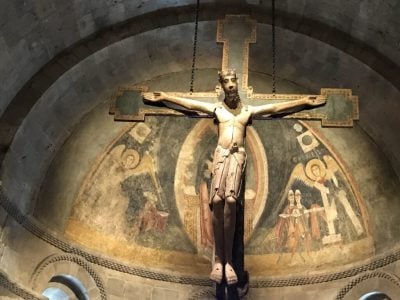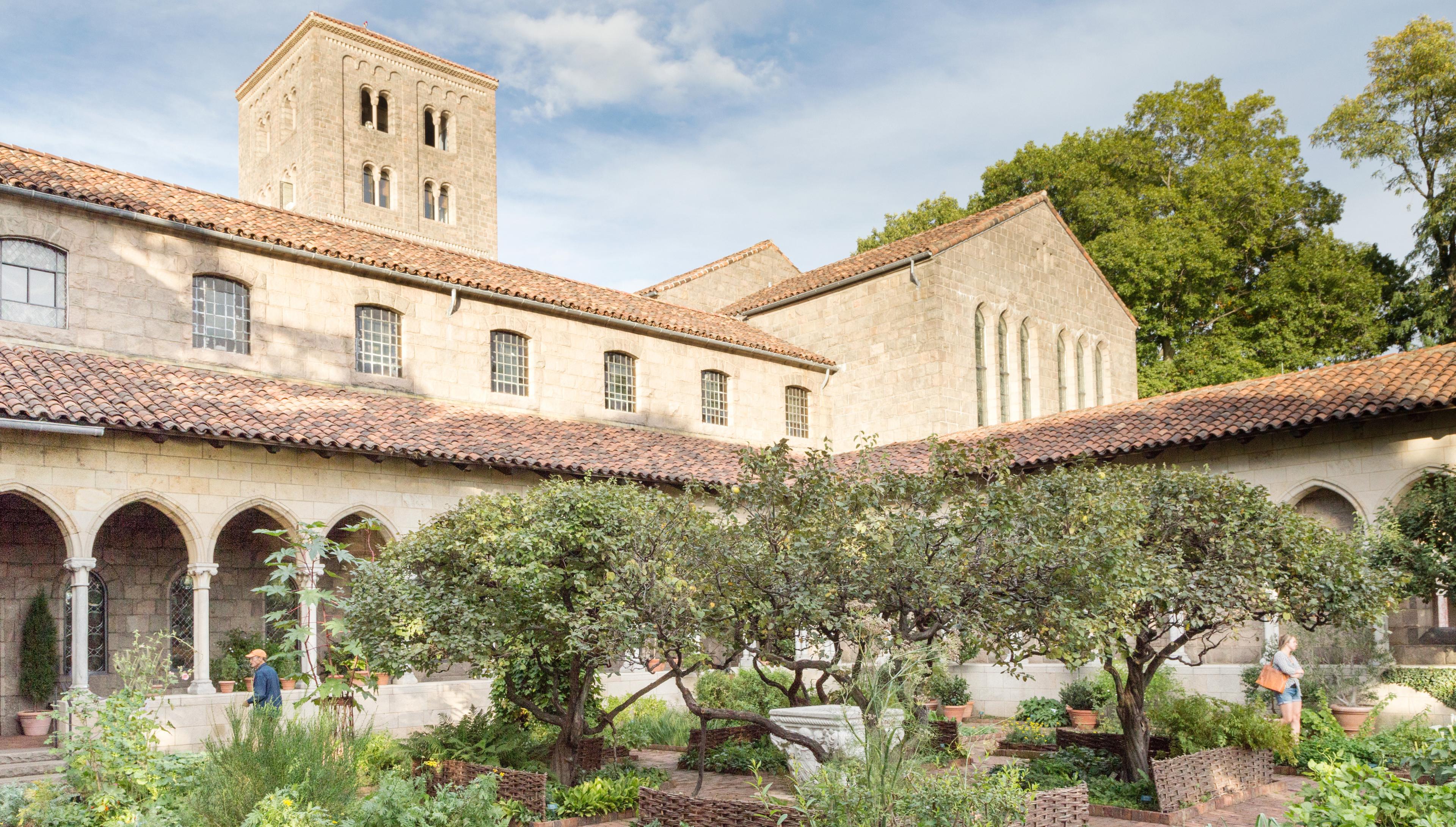The Hidden Messages of the Power Elite’s Cultural Apparatus

All Global Research articles can be read in 51 languages by activating the Translate Website button below the author’s name (only available in desktop version).
To receive Global Research’s Daily Newsletter (selected articles), click here.
Click the share button above to email/forward this article to your friends and colleagues. Follow us on Instagram and Twitter and subscribe to our Telegram Channel. Feel free to repost and share widely Global Research articles.
Global Research Wants to Hear From You!
***
To be crucified is to suffer and die slowly and agonizingly. It was a common form of execution in the ancient world. It is generally associated with Rome’s killing of Jesus and carries profound symbolic spiritual meaning for Christians.
In its figurative sense, it refers to many types of suffering and death inflicted on the weak by the strong, such as the ongoing genocidal slaughter of Palestinians by the Israel government.
Twenty or so years ago when the wearing of crosses by all types of people was the cultural rage, a woman I know said she was thinking of getting one.
When I asked her why, since she was Jewish, she said it was because she thought they were beautiful. She seemed oblivious to the fact that to Christians they were gruesome but revelatory spiritual symbols, the equivalent of the electric chair or a noose, but linked to the Easter Resurrection and the non-violent triumph over death that is at the core of Christianity.
Her focus on beauty forcibly struck me that secular culture had triumphed in its establishment of an anti-creed creed wherein the pursuit of a sense of well-being and aesthetic tranquility had trumped traditional belief, while it used all faiths in its pursuit of a self-centered nihilism through a faux-spirituality linked to a precious aesthetic of beauty.
Philip Rieff noticed this in the mid-1960s when he wrote in The Triumph of the Therapeutic:
To raise the question of nihilism, as sociologists since Auguste Comte have done, demonstrates a major change in tone: the note of apprehension has gone out of the asking. We believe that we know something our predecessors did not: that we can live freely at last, enjoying all our senses – except the sense of the past – as unremembering, honest, and friendly barbarians all, in a technological Eden. . . . this culture, which once imagined itself inside a church, feels trapped in something like a zoo of separate cages. Modern men are like Rilke’s panther, forever looking out of one cage into another.
While today those cages would better be described as cells – as in cell phones – Rieff’s point was prescient in the extreme, echoing in its way Max Weber’s 1905 prophecy in The Protestant Ethic and the Spirit of Capitalism of the coming “iron cage.”
It would be understandable if you assumed the photograph of the crucifix that precedes my words was taken in a church since its foregrounding before the apse of the Medieval Spanish church of San Martin at Fuentidueña makes it seem so.
It was not, except if you realize that museums have become the modern churches, where people flock to revere art for art’s sake and perhaps to find some consolation they have lost at a deeper level.
Museums that have been built and maintained by the very rich to serve as their own churches to the glory of mammon and their own self-deluded immortalization.
Mammon that has been built on the backs of the poor and working class, just as these edifices have.
Beneath all high cultural institutions such as museums and arts venues like The Metropolitan Museum of Art, the Museum of Modern Art, Lincoln Center in New York, etc., lies the expropriated labor and land of the lower classes, the same classes whose sweat and blood was exploited throughout capital’s historical transmutations from commercial to industrial to financial to create the immense wealth of the super-rich.
There is a reason the 19th century America industrialists such as Vanderbilt, Mellon, Carnegie, Rockefeller, et al. were called “The Robber Barons.” They were crooks.
They are still with us, of course, aided and abetted by today’s latest billionaire class. They build and finance the aforementioned cultural institutions as well as own and operate the major institutions of mass communication and entertainment, such as newspapers, television networks, telecommunication corporations, film studios, etc. – the entertainment industrial complex.
In this direct communication capacity, they control the mediation of “reality” to the general population. They serve the interests of what the great crusading sociologist C. Wright Mills called the power elite in and out of government, of which they are an interlocking part, and through which they move smoothly in a game of revolving chairs. They operate the great Spectacle for the general population while moving the levers of power backstage.
When he died, Mills was working on a massive book exploring what he provisionally titled The Cultural Apparatus. He defined this complex as follows:
The cultural apparatus is composed of all the organizations and milieux in which artistic, intellectual, and scientific work goes on and of the means by which such work is made available . . . it contains an elaborate set of institutions: of schools and theaters, newspapers and census bureaus, studios, laboratories, museums, little magazines and radio networks. . . Inside this network, standing between men and events, the images, meanings, and slogans that define the worlds in which [we] live are organized and compared, maintained and revised, lost and cherished, hidden, debunked, celebrated. Taken as a whole the cultural apparatus is the lens of mankind through which men see; the medium by which they report and interpret what they see.
Columbia University, where he taught and is today in the news headlines for its police crackdown on student dissent for their pro-Palestinian protest, is one of those elite cultural institutions, a place Mills was never comfortable at and whose colleagues looked at him askance for his critique of the power elite’s warfare state.

Panoramic view of the Morningside Heights campus as seen from Butler Library and facing Low Memorial Library (Licensed under CC BY-SA 3.0)
Columbia, with its racist history as it saw its elite status threatened by the growth of the neighboring black community in Harlem in the 1920s and 1930s, and Columbia’s further expansion into these neighborhoods since.
Columbia, like all elite cultural institutions, born in its own mind sui generis and raised to the heights in purity and innocence, but whose foundation is rotten with dirty money.
Yet, as Terry Eagleton recently wrote in the London Review of Books, “This is not the way culture generally likes to see itself. Like the Oedipal child, it tends to disavow its lowly parentage and fantasise that it sprang from its own loins, self-generating and self-fashioning.” Like Columbia and all the elite universities of “higher learning” – Harvard, Oxford, Yale, Princeton, Stanford, etc. – that serve as legitimating tools for the power elite and their mendaciousness, the museums and other well-known arts institutions exert an enormous influence, not only over culture in the high cultural sense, but over the transformation of society as a whole, often in ways that go unnoticed. Eagleton again:
There’s an irony here, since few things bind art so closely to its material context as its claim to stand free of that context. This is because the work of art as autonomous and self-determining, an idea born sometime in the late 18th century, is the model of a version of the human subject that has been rapidly gaining ground in actual life. Men and women are now seen as authors of themselves . . .

The Met Cloisters (Source)
The photo of the crucifix and the apse that precedes my words was recently taken in The Cloisters in upper Manhattan, New York City, where the ghosts of dead religious beliefs prowl about the rooms. It is meant to present a “chapel-like gallery.” The Cloisters is a museum owned by the Metropolitan Museum of Art and is now known as The Met Cloisters. It, and the beautiful 67 acre Fort Tryon Park upon which it sits, was created and financed by John D. Rockefeller, Jr. who, according to The Met’s website was fascinated with the past. “The expert artistry of medieval art as well as its innate spirituality strongly appealed to this philanthropist and collector,” we are told.
Spirituality from the Middle Ages, I will amend, that when it had been transported to the museum was devoid of its living context and could be presented as a gift from a Robber Baron family to the people of NYC who needed to be uplifted by the noblesse oblige kindness of the Rockefellers. Dead spirits devoid of living inner religiousness who smuggle secret messages to a public hungry for meaning.
Like my friend who considered getting a cross, Rockefeller no doubt found the crucifix and apse that frames it quite beautiful and spiritually uplifting, but not the living spirituality of the “criminal Jesus” whose powerful message about wealth never informed the Rockefellers’ ruthless exploitation of others on their rise to power.
In years long past, when I first visited The Cloisters, being a native Bronx New Yorker, it was known simply as The Cloisters, even though The Met owned it since its inception in the 1930s. Before I visited it as a young man, I had the impression it had some religious significance, as the name cloister suggests (early 13c., cloystre, “a monastery or convent, a place of religious retirement or seclusion”).
But I was wrong; it is a museum, a beautiful museum build with stones from European monasteries, churches, and convents transported long ago across the Atlantic and reconstructed on the heights above the Hudson River.
It is filled with medieval art collected by Rockefeller, George Gray Barnard, and other wealthy art collectors.
For those so disposed to wondering what royalty prayed for in medieval days – was it to slaughter as many Muslims as possible in the Crusades? – one can view the tiny prayer book once owned by the Queen of France – and imagine. Such imagining might cause one to realize how little things have changed and how little things mean a lot. The trick is to notice them.
Political power needs cultural power to operate effectively. The elites can’t just slam people around and expect no response. They need to worm their ideological messages into the public consciousness in pleasing ways. Writing of Edmund Burke, Eagleton says, “Instead, he recognises that culture in the anthropological sense is the place where power has to bed itself down if it is to be effective. If the political doesn’t find a home in the cultural, its sovereignty won’t take hold.”
Thus, for an example from Hollywood and the pop-cultural realm, we might notice how many movies and TV shows were secretly co-written by the Pentagon.
Another Name for This Is Propaganda
Cultural messaging is where the power elite need to seduce regular people that power is being exercised for their own good and everyone is in bed together. Soft power. Nice power. Power that is disguised as beneficial for all. Beautiful power. “Spiritual” power.
As I said, Fort Tryon Park (designed by the Olmsted brothers, sons of the designer of Central Park, Frederick Law Olmsted) and The Cloisters are spectacularly beautiful. Walking through the park on a sunny spring day to reach the museum on its northern end – the flowers and cherry blossom trees dazzling and the Hudson River glistening below – one is overwhelmed by the beauty and grateful to its human gift giver – John D. Rockefeller, Jr. It takes a little mental stretching to grasp the paradox or the delusional dream of such thankfulness. But it cuts to the heart of the power of the cultural complex and the ways it works to soften the ruthlessness of its ultra-rich capitalistic controllers.
First they rob you, then they gift you with a walk in the park.
And when you step inside their institutions, you are provided with opportunities to think within controlled parameters, while also getting a whiff of the theatrical nature of your experience. The whiff is as important as the thinking, for it is a reminder to keep your mouth shut and you too will flourish.
The fraudulence of the cultural entertainment-educational complex can dawn on some who have been invited into the inner sanctums of power and prestige, as it has done presently for many college students (and some faculty) whose consciences do not allow them to sit still while Palestinians are slaughtered.
But if you dare to act upon your sense of being taken for a ride, watch out! You will be banned from the pleasures that are offered for your acquiescence, as these students are now finding out.
They have rejected that part of the learning experience that George Orwell called Crimestop:
. . . [it] means the faculty of stopping short, as though by instinct, at the threshold of any dangerous thought. It includes the power of not grasping analogies, of failing to perceive logical errors, of misunderstanding the simplest arguments if they are inimical to Ingsoc, and of being bored or repelled by any train of thought which is capable of leading in a heretical direction. Crimestop, in short, means protective stupidity.
Sometimes real thinking and conscience win the day, for the power of the elite’s cultural institutions is not omnipotent. Everyone is not for sale, even those invited into the banquet. Teach people to think and meditate on history and they just might think outside the cage of your expectations.
While the genocide of the Palestinians is transparent for everyone to see, the leaders of these elite universities, unlike the rebellious students, turn a blind eye to the obvious. They follow the script they were handed when they accepted their prestigious positions of power, living up to Julian Benda’s famous appellation – The Treason of the Intellectuals.
But “beautiful” power becomes the iron fist when the plebes get too uppity and actually take seriously their studies and rebel as human beings with consciences. This is the flip side to the hidden messages of the elite cultural institutions.
This two-sided process of hidden and obvious messages operates also in the media complex (see this). While the so-called liberal and conservative media – all stenographers for the intelligence agencies – pour forth the most blatant propaganda about Palestine, Israel, Russia and Ukraine, etc. that is so conspicuous that it is comedic if it weren’t so dangerous, the self-depicted cognoscenti also ingest subtler messages, often from the alternative media and from people they consider dissidents.
They are like little seeds slipped in as if no one will notice; they work their magic nearly unconsciously. Few notice them, for they are often imperceptible. But they have their effects and are cumulative and are far more powerful over time than blatant statements that will turn people off, especially those who think propaganda doesn’t work on them. This is the power of successful propaganda, whether purposeful or not. It particularly works well on “intellectual” and highly-schooled people.
Some people think that if you see more than is apparent when visiting sites such as The Cloisters in Fort Tryon Park, you are incapable of enjoying the beauty of these “gifts.” This is not true. They are not mutually exclusive. The great African-American scholar W. E. B. DuBois coined a term double-consciousness which I think can be used in this context to describe some people’s experience, not just that of African-Americans. They see at least two truths simultaneously. Their unreconciled double-consciousness prevents them from single vision when visiting the power elite’s beautiful creations. William Blake’s words – “May God us keep from single vision and Newton’s sleep! – inform their perspective.
On the same trip to The Cloisters, my wife and I walked extensively through Central Park, surely one of the most beautiful parks in the world. It was spectacularly aflame with Cherry Blossom trees and people from all over the world enjoying its pleasures, as did we. I, however, when entering and exiting this paradise, couldn’t help thinking that this park was caged in by the massive apartment complexes of the super-rich elite class, as if to say to the park’s visitors: you can visit but not stay. We oversee your pleasures.
Max Weber said it well a century ago:
No one knows who will live in this cage in the future, or at the end of this tremendous development entirely new prophets will arise, or there will be a great rebirth of old ideas and ideals, or, if neither, mechanized petrification, embellished with a sort of convulsive self-importance. For of the last stage of this cultural development, it might be said: “Specialists without spirit, sensualists without heart; this nullity imagines that it has attained a level of civilization never before achieved.”
*
Note to readers: Please click the share button above. Follow us on Instagram and Twitter and subscribe to our Telegram Channel. Feel free to repost and share widely Global Research articles.
This article was originally published on the author’s website, Behind the Curtain.
Edward Curtin is a prominent author, researcher and sociologist based in Western Massachusetts. He is a Research Associate of the Centre for Research on Globalization (CRG).



